WMG News
WMG Centre HVM Catapult hosts ’System Safety and Accident Analysis conference
WMG Centre HVM Catapult was proud to host the first virtual European STAMP Workshop and Conference (ESWC) from 21st-22nd October.
 The conference focussed on safety analysis of complex systems in diverse domains including self-driving cars, marine, aviation and healthcare. The conference brought together researchers and practitioners to hear more about Systems-Theoretic Accident Model and Processes (STAMP).
The conference focussed on safety analysis of complex systems in diverse domains including self-driving cars, marine, aviation and healthcare. The conference brought together researchers and practitioners to hear more about Systems-Theoretic Accident Model and Processes (STAMP).
STAMP is a new accident causality model based on systems theory, increasing our understanding of why complex systems fail, and helping to make them safer by predicting accidents and analysing hazards.
The varied agenda featured world-leading speakers from General Motors, Thales, Ansys, Codethink, as well as experts from the Intelligent Vehicles research group at WMG.
Presenters included Dr John Thomas from Massachusetts Institute of Technology and Professor Nancy Leveson (at MIT) who have introduced STAMP methods (STPA and CAST) to the world.
Over 300 people attended over the two days from more than 30 countries, including Japan, South Korea, Israel, Turkey, UAE, USA, Sweden, Finland, France, Russia and the UK, with diverse representation from both academia and business.
WMG has also been selected by the European conference steering committee to host the 9th European STAMP Workshop and Conference (ESWC) in October 2021. This is the first time the conference will be physically hosted in the UK, providing a valuable opportunity to showcase the UK’s world-leading capabilities in complex systems like Connected and Automated mobility (CAM) technology and systems, Electric Vehicles, Aviation and Marine.
Find out more about STAMP and WMG System Safety research here or contact Dr Siddartha Khastgir.
To register your interest in the 9th European STAMP Workshop and Conference (ESWC) in October 2021 click here.
WMG apprentice wins at 2020 West Midlands regional National Apprenticeship Awards
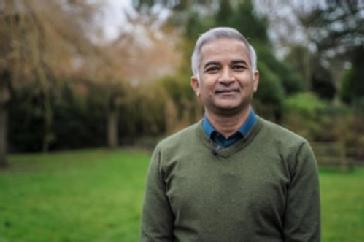 Congratulations to Manoj Vadher, Head of Engineering Reliability and Knowledge at Royal Mail, who’s been named as the winner in the Degree Apprentice of the Year category, at the West Midlands regional National Apprenticeship Awards 2020.
Congratulations to Manoj Vadher, Head of Engineering Reliability and Knowledge at Royal Mail, who’s been named as the winner in the Degree Apprentice of the Year category, at the West Midlands regional National Apprenticeship Awards 2020.
Manoj, is currently in his final year of his Master’s Level 7 Degree Apprenticeship as part of the WMG Senior Leader Degree Apprenticeship programme.
Manoj explains: “I am also the functional lead in engineering for the Royal Mail development programme. I have been working with the communities, colleges and the universities to develop apprenticeship programmes. As a result, Engineering at Royal Mail now has the benchmark development programme all through the apprenticeship schemes.
“I have also applied the learning from my apprenticeship to deliver solutions that had the major positive impact on the ways of working bringing significant financial savings. I delivered engineering maintenance strategies, robotic process automation and machine learning initiatives.”
He adds: “Balancing work and study can be challenging, especially if you are in a demanding role. The programme is delivered using the block delivery model, making it easier to balance your time. The key benefit of studying through apprenticeships is that it allows you to integrate study with your day-to-day role. For me, both areas grew in parallel. You quickly start to understand and manage the priorities in your personal and professional life. My personal productivity improved. I don’t think I will ever go back and waste valuable time on the some of the activities at both work and home.”
WMG Senior Leader Course Leader, Trudy Spencer, explains: “The teaching team at WMG thoroughly enjoy working with the Royal Mail delegates to deliver the Senior Leader Degree Apprenticeship Programme. It is particularly satisfying to see the programme learning being applied in the workplace and having a positive impact on both the Royal Mail business and the delegates’ personal development.
“Manoj has been an advocate for our programme from the launch and has taken every opportunity to apply and share his learning back at work. We are delighted to see his achievements being recognised through this award.”
James Baker, Chief Engineer and Fleet Director at Royal Mail group said: “I am delighted Manoj’s hard work and dedication has been recognised at the West Midlands regional National Apprenticeship Awards. He has used his learning to develop himself and to grow the capabilities of the wider business team. A great personal achievement and demonstrates the positive impact continual development can have.”
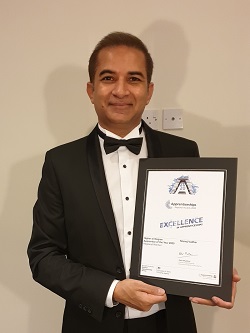
Manoj adds: “If anyone is thinking about doing an apprenticeship, I would say it is the best choice you can make for yourself. Find the right course with the relevant apprenticeship standards for you and go for it.”
Manoj went on to the final of the National Apprenticeship Awards on 25th November where he was Highly Commended.
Find out more about the WMG Senior Leader Programme here.
WMG academic helps identify the frameworks for the Government to enrol Autonomous Vehicles
When it comes to Autonomous Vehicles the question on everyone’s lips is when will they be on the roads? However for them to be safely deployed there must be a policy framework.
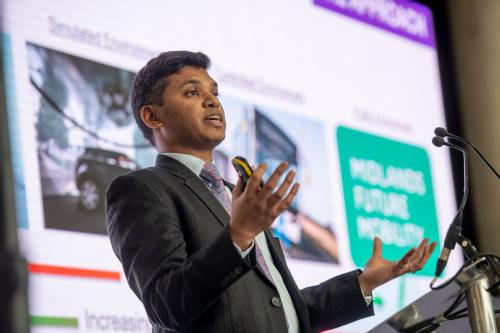 In the report, ‘Safe Drive Initiative: SafeDI Scenario-Based AV Policy Framework - an overview for policymakers, published by the World Economic Forum, Dr Siddartha Khastgir from WMG, University of Warwick as part of the Technical Working Group of the Safe Drive Initiative, contributed to the technological aspects of the policy framework building on his UKRI Future Leaders Fellowship research outcomes.
In the report, ‘Safe Drive Initiative: SafeDI Scenario-Based AV Policy Framework - an overview for policymakers, published by the World Economic Forum, Dr Siddartha Khastgir from WMG, University of Warwick as part of the Technical Working Group of the Safe Drive Initiative, contributed to the technological aspects of the policy framework building on his UKRI Future Leaders Fellowship research outcomes.
In order to measure driving safely in the AV sector there are many challenges, especially how to evaluate the safety of AVs. In this report, the Forum along with industry, government and academic experts have developed guidance and tools to create a useful, practicable governance approach for safety assurance of AVs, based on how it behaves in the context of its operating environment, known as its Operational Design Domain (ODD).
The Safe Drive Initiative seeks to establish a high-level framework to enable regulators and AV developers to work collaboratively to demonstrate an AV system’s capability to operate without intervention from a driver. The initiative proposes a data-driven, scenario based assessment using a graduated approach to safety assurance. The framework’s approach is vehicle and solution-agnostic and builds upon existing national and international standards, where possible. The approach focusses on assessing AV in the context of its deployment ODD by demonstrating behaviour competence in a range of scenarios and covers using simulation, driving in controlled environments and naturalistic on-road driving for evaluation. This can then be adopted by a regulator or government entities, which are responsible for managing AV development and deployment.
The report has highlighted numerous points of testing that all bodies should follow, including:
1. Prepare - Convene necessary stakeholders to identify interim milestones as a function of the deployment ODD which can be defined using standard taxonomies e.g. BSI PAS 1883
2. Define - Specify qualitative scenarios for the interim milestones as behaviour competencies in each ODD sub-set
3. Measure – Using a scenario database (e.g. SafetyPool, UK’s National CAV Test Scenario Database), select scenarios based on ODD for simulation and corresponding success criteria
4. Execute – Conduct on-road tests and perform on going monitoring to evaluate scenario exposure to refine evaluation
The graduated approach enables defining interim milestones as a function of deployment ODD. After completing all steps of the assessment regulators should have a clear idea of which AV developers are ready to operate commercially in the deployment operational design domain. Ideally, the AV developer should demonstrate the vehicle’s capability to operate without a safety driver, but this depends on back-up on mechanisms such as minimal risk manoeuvres and remote operators to take control should they meet a rare situation it is not designed to handle, for example if an emergency vehicle is approaching.
Dr Siddartha Khastgir, from WMG, University of Warwick comments:
“Although this framework is for all regulators who want to implement an operational safety assessment within their jurisdiction, not one-size will fit all, different towns and cities all over the world will have different concerns based on their respective Operational Design Domains, and therefore each step should be customised for each community. Defining the interim milestones and qualitative scenarios as a function of deployment ODD, enables this framework to be used by wide variety of stakeholders like manufacturers, governments, local-authorities etc.
“We do however hope that this framework will help us see the safe development and deployment of CAVs, so that in the future we can see the benefits of safe, clean and inclusive mobility. WMG are already researching this in many ways, as we are leading the Midlands Future Mobility testbed, which sees autonomous vehicles being tested on real worlds, and have the facilities, such as the 3xD simulator to test AVs before they go on real world tests.”
Tim Dawkins from the World Economic Forum comments:
“By bringing together a multi-stakeholder community of industry, academia, safety organizations and regulators, we’ve developed a pro-active approach which will enables policymakers to structure a safety evaluation for AVs which reflects the challenges of their roads, and expects a common standard of safety across different types of vehicle. Partnering with research institutions like WMG is essential to building the knowledge base to empower regulators for success.”
11 NOVEMBER 2020
NOTES TO EDITORS:
High-res images available at:
- 3xD Simulator: https://warwick.ac.uk/services/communications/medialibrary/images/november_2020/3xd.jpg
- Dr Siddartha Khastgir: https://warwick.ac.uk/services/communications/medialibrary/images/november_2020/sid_42.jpg
Report available to view at: http://www3.weforum.org/docs/WEF_Safe_DI_AV_policy_framework_2020.pdf
More details about Siddartha’s UKRI Future Leadership can be seen at:
- https://warwick.ac.uk/fac/sci/wmg/research/cav/vandv/ukriflf/
- https://youtu.be/sjpL82E-JCQ
A TEDx talk by Siddartha can also be seen at: https://youtu.be/KrOOXE3SW-A
The next generation of WMG engineers
Congratulations to the 2018 cohort of Graduate Trainee Engineers who have all now successfully completed the Scheme, and secured new positions as Project Engineers at WMG.
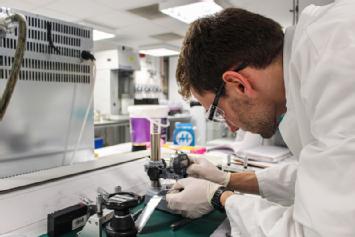 Over the last two years the eight graduates; Harry Chan, Edward Griffin, Katerina Gonos, Jet Feng, Ben Ayre, Adam Szypula, Vidya Narayanan and Puja Unadkat; have been developing their engineering skills by working with academics and industry partners on either autonomous vehicles or energy innovation research.
Over the last two years the eight graduates; Harry Chan, Edward Griffin, Katerina Gonos, Jet Feng, Ben Ayre, Adam Szypula, Vidya Narayanan and Puja Unadkat; have been developing their engineering skills by working with academics and industry partners on either autonomous vehicles or energy innovation research.
Several of the graduates have also had their work published in leading academic journals and shared their expertise at key industry events.
In addition all eight have also supported WMG’s Outreach programme by taking part in workshops, demonstrations and talks with local school children including at the University’s Family Day events.
WMG’s Graduate Scheme Manager, Louise Oddy explains: “The recent success of our graduates is a true testament to their consistent hard work, determination and professionalism. They have made a lasting impact across several areas of WMG and will continue to do this within their roles as Project Engineers. Growing our own talent is integral to the future success of WMG and I could not be prouder of all of the Graduate Engineers. Thank you to those across the department that continue to support the scheme and make our programme so unique.”
 Project Engineer, Ed Griffin adds: “WMG is an exceptional organisation where the graduate scheme promotes excellent tailored development in each graduate’s individual technical field. Our exposure to a range of cutting-edge automotive research, combined with various project management opportunities, is now invaluable in our Project Engineer roles.”
Project Engineer, Ed Griffin adds: “WMG is an exceptional organisation where the graduate scheme promotes excellent tailored development in each graduate’s individual technical field. Our exposure to a range of cutting-edge automotive research, combined with various project management opportunities, is now invaluable in our Project Engineer roles.”
Find out more about the WMG Graduate Scheme here.
Prof. Lord Bhattacharyya Building announced as a 2021 Civic Trust Awards Regional Finalist
The Prof. Lord Bhattacharyya Building, home to the National Automotive Innovation Centre (NAIC) has been announced as a 2021 Civic Trust Awards Regional Finalist.
The aim of the Civic Trust Awards is to encourage the very best in architecture and environmental design, to improve the built environment for us all through
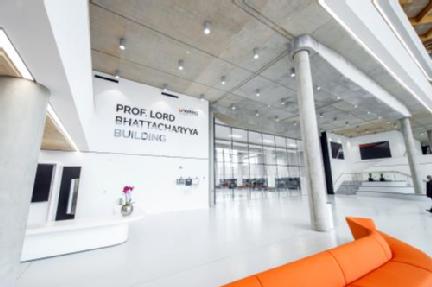
design, sustainability, inclusiveness and accessibility, but also to reward projects that offer a positive cultural, social, economic or environmental benefit to their local communities.
Based at the University of Warwick, NAIC was officially opened on 18 February 2020 by HRH The Prince of Wales. The Centre is a partnership between WMG, University of Warwick, Jaguar Land Rover, and Tata Motors, and is the largest centre of its kind in Europe. It is well timed, arriving when a global mobility revolution is underway, with a new age for transport mobility.
A beacon for automotive research it brings together the brightest minds from industry and academia, to develop future vehicles and mobility solutions. It is home to up to 1,000 staff working across design, engineering and research, as well as future engineers on degree programmes.
Designed by Cullinan Studios the brief for the Centre was for simplicity and strength of purpose, turning a complex assembly of spaces into an immediately legible building.
All regional finalists will now be considered for National/International Civic Trust Awards and AABC Conservation Awards, the outcome of which will be in January 2021. All projects will also be considered by the Selwyn Goldsmith Awards Panel which recognise Universal Design excellence in the built environment.
The Prof. Lord Bhattacharyya Building wins Project of the Year at the Building Awards 2020
The Prof. Lord Bhattacharyya Building, home to the National Automotive Innovation Centre (NAIC) stands proud as it wins Building Magazine Project of the Year at the Building Awards 2020 on 3rd November 2020.
Last month we announced that the building had been shortlisted in the Project of the Year category.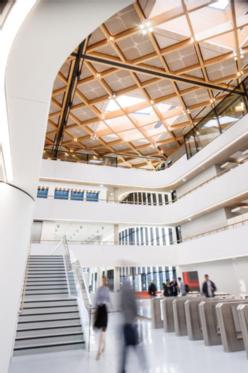
Nominees had to demonstrate outstanding contribution to the built environment and be an exemplar of good construction practice. Lynne Sullivan OBE, a member of the judging team, said ‘We were both impressed and inspired by the National Automotive Innovation Centre. It feels like research and innovation 21st century style. It also feels like a great place to work, it has tactile qualities and spaces linking to outdoors. It is heroic and yet flexible and people centred, a memorable winner’.
Based at the University of Warwick, NAIC was officially opened on 18 February 2020 by HRH The Prince of Wales. The Centre is a partnership between WMG, University of Warwick, Jaguar Land Rover, and Tata Motors, and is the largest centre of its kind in Europe. It is well timed, arriving when a global mobility revolution is underway, with a new age for transport mobility.
A beacon for automotive research it brings together the brightest minds from industry and academia, to develop future vehicles and mobility solutions. It is home to up to 1,000 staff working across design, engineering and research, as well as future engineers on degree programmes.
Designed by Cullinan Studios the brief for the Centre was for simplicity and strength of purpose, turning a complex assembly of spaces into an immediately legible building.
This is the third award NAIC has won in the last month, the previous awards are BCO Central and Mildands Innovation Award and AIA Excellence in Design Award.
WMG helped keep Tetley tea on shelves during the first wave of the COVID-19 pandemic
As the UK entered lockdown as a result of the Covid-19 pandemic, panic buying of essential items including tea caused a massive spike in demand. With demand for products doubling in some instances, many companies struggled to keep up with supply, but Tata Consumer Products Ltd (TCPL), the parent of the Tetley tea brand in the UK, Eight O Clock Coffee in the USA and Tata Tea in India, managed to keep products on shelves and customers supplied with the tea they needed.
To ensure that it could maintain supplies of tea Tetley’s UK factory in Teesside increased production by more than 40%. Their ability to adapt and respond to the unprecedented level demand owed much to their supply chain strategy on which WMG, University of Warwick had been working with them to enhance since 2015.
Professor Jan Godsell from WMG led the team that analysed Tetley’s sales and stock data to create a demand profile. Professor Jan Godsell explains: “We identified an optimal level of utilisation that would keep TCL competitive and allow spare capacity to deal with fluctuations in demand. John Burdett, Global Operations Director for Tata Consumer Products Ltd, then used these recommendations to help set-up the supply chain strategy, which was rigorously tested during the COVID-19 pandemic as the demand for tea soared.
“It was both an exhilarating time and a frightening time. Because of the buffer management approach we had in place, we were able to deliver 35% surge capacity to supply our customers and consumers and keep the UK drinking tea. This meant we could react extremely quickly to the rapidly moving market conditions and gain competitive advantage.”
TCPL demonstrated how having a flexible supply chain can be used to react quickly to the market and enhance market performance, being able to respond to increased demand and maintain supplies of tea resulted in Tetley gaining market share during the Covid-19 panic buying period.
Through two Innovate UK grants, WMG also helped to develop SupplyVue analytics software. SupplyVue can assess a business’s end-to-end supply chain including production scheduling, planning and inventory management to suggest ways to optimise the supply chain. TCPL made the bold move to deploy SupplyVue just as the COVID-19 pandemic was reaching its initial peak, helping them to reconfigure their tea supply to Canada. When there are increasing levels of volatility along the supply chain, a phenomenon known as the ‘bullwhip effect’ occurs and this took place during the pandemic. It occurs when orders received from a customer are rounded up to suit production constraints resulting in a mismatch in stock levels compared with what is actually required.
John comments: “The end to end visibility that we have as a result of SupplyVue means we’ve eliminated the bullwhip effect – we saw no increased stock levels as we recovered from the panic buying phase of pandemic. Enabled by insight through analytics, we’re now collaborating across the supply chain and are using the end-to-end visibility to get a smooth, even flow of products through to our customers.”
TCPL are now looking at rolling out the same optimisation model into other supply chains and unlocking more value.
Professor Godsell comments: “As humans, we are subject to myopic loss aversion. This is a bias that means we tend to fear loss more than gain. In supply chains, it means that the fear of losing a sale, leads to a change in the production schedule that can lead to overproduction. COVID-19 exacerbated this effect.
“SupplyVue provided full end-to-end supply chain visibility, and the confidence to trust the current plan. This enabled customer orders to be fulfilled at lowest possible supply chain cost and the unnecessary costs of overproduction and excess inventory to be avoided.”
ENDS
2 NOVEMBER 2020
NOTES TO EDITORS
High-res images available at:
https://warwick.ac.uk/services/communications/medialibrary/images/january2019/jangodsell250.jpg
Caption: Professor Jan Godsell, from WMG at the University of Warwick
Credit: WMG, University of Warwick
https://warwick.ac.uk/services/communications/medialibrary/images/october_2020/lifestyle_tetley_shot_-_new_pack.png
Caption: A pack of Tetley tea.
Credit: Tetley UK
Studies available to view at:
https://warwick.ac.uk/fac/sci/wmg/research/transformation/supply_chain/wmg_tetley_success_story_buffer_theory.pdf
For further information please contact:
Alice Scott
Media Relations Manager – Science
University of Warwick
Tel: +44 (0) 7920 531 221
E-mail: alice.j.scott@warwick.ac.uk
Prof. Lord Bhattacharyya Building wins Sustainability category at the AIA Excellence in Design Awards 2020
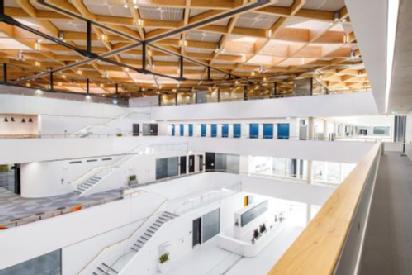 The Prof. Lord Bhattacharyya Building, home to the National Automotive Innovation Centre (NAIC) has won yet another award, this time at the 2020 Excellence in Design Awards, hosted virtually by the AIA UK Chapter on the 28 October. The awards were chosen from three overarching categories: Professional, Emerging Practice and Sustainability, a new category addition. The building scooped the Sustainability-Large Project category.
The Prof. Lord Bhattacharyya Building, home to the National Automotive Innovation Centre (NAIC) has won yet another award, this time at the 2020 Excellence in Design Awards, hosted virtually by the AIA UK Chapter on the 28 October. The awards were chosen from three overarching categories: Professional, Emerging Practice and Sustainability, a new category addition. The building scooped the Sustainability-Large Project category.
This comes shortly after the building was recognised as one of the best workplaces in the Midlands and Central England at the annual British Council for Offices (BCO) regional awards, winning the British Council for Office Midlands and Central Innovation Award.
Based at the University of Warwick, NAIC was officially open on 18th February 2020 by HRH The Prince of Wales. The Centre is a partnership between WMG, University of Warwick, Jaguar Land Rover, and Tata Motors, and is the largest of its kind in Europe and is well timed, arriving when a global mobility revolution is underway, with a new age for transport mobility.
A beacon for automotive research it brings together the brightest minds from industry and academia, to develop future vehicles and mobility solutions. It is home to up to 1,000 staff working across design, engineering and research, as well as future engineers on degree programmes.
Designed by Cullinan Studios the brief for the Centre was for simplicity and strength of purpose, turning a complex assembly of spaces into an immediately legible building.
Aerospace electrification: Accelerating the opportunity
 The Aerospace Electrification event with WMG and ATI successfully brought together thought leaders and experts from across the aerospace supply chain and other sectors.
The Aerospace Electrification event with WMG and ATI successfully brought together thought leaders and experts from across the aerospace supply chain and other sectors.
Such events are vital to understand the opportunities and challenges faced by the sector, and a collaborative approach combining industry and academia will help the UK to continue its place at the forefront of transport electrification.
A series of presentations, workshops and Q&A led to a lively critical analysis of the topics at hand for aerospace electrification. These included safety, energy storage, electric drives, power electronics, thermal management, whole-vehicle optimisation and many more.
Alison Meir, Head of Business Development, WMG HVM Catapult, chaired the event, and introduced our first speaker, Mark Scully, Head of Advanced Systems and Propulsion at the ATI, who set the scene. Aerospace electrification has been a topic for some time now and technology is developing apace, with propulsion systems, subsystems and ancillaries all being electrified. Mark highlighted huge opportunities for the sector, with funding from UK Government supporting collaborative R&D in electrification. The ATI welcomes enquiries from industrial, academic and other stakeholders looking for R&D support.
Battery technologies and associated key metrics were presented by David Rawlins, Chief Technology Officer (CTO) at WMG. The safety-conscious nature of the aerospace industry has typically led to a modest pace of development in such technologies compared with, say, automotive. David identified that aerospace engineers are trained to design for perfection, but with future architectures and technologies still fledgling, no one knows what the perfect or ‘right’ solution yet is. So, there is opportunity for faster paced R&D. There is a growing evidence base on the limitations of battery technology and the trade-offs of power density against energy density, primarily driven by the automotive sector. As such, it is vital that the sector remains committed to influencing and leading battery technology for aerospace. An example is the ATI ACCEL programme, involving Electroflight and Rolls Royce, in partnership with Yasa, WMG and more. The continual need to engage with and influence the regulatory bodies for safety and certification was a poignant discussion point.
Future hybrid and all-electric aircraft will use radically different architectures to the aircraft of today, enhancing the need for a holistic systems engineering approach to design and integration. Sarabpal Bhatia, E-Fan X R&T Coordination Manager at Airbus, provided insight into the considerations currently underway at Airbus and the wider industry. Sarabpal reinforced that the aerospace and aviation industries have learnt many lessons since the dawn of flight and the jet age and that, as a collaborative sector, we must continue to learn lessons together. The integration challenges discussed included thermal management, high-voltage systems and arcing, human-machine interface, electromagnetic interference and protection. All of which are providing engineers with intricate problems to solve for future architectures.
On the topic of electric machines and more-electric aircraft (MEA), Marc Holme, Senior Director, at Collins Aerospace was able to share insight to delegates. The Boeing 787 currently has significant electrical energy generation capability (>1MVA) with electrification of pneumatic and environmental control systems. Marc identified that there are further electrification opportunities on the current fleet of conventional aircraft with technologies such as:
- Higher performance magnetics.
- Higher voltage systems.
- Improved semiconductor device efficiency.
The primary drivers for these are currently size, weight, power and cost. For future vehicles, electrical machines, power densities, power electronics and integrated drives, increased operating temperatures and systems safety were all topics of discussion. Composite enclosures for electrical machines were introduced, with the lower weight being traded for potentially lower EMI immunity.
These insightful presentations were followed by a series of hands-on workshops chaired by WMG and ATI to identify and address the key challenges and identify ways to overcome them. Following these sessions, delegates fed back and were able to ask questions of our expert panel.
During the Q&A, creation and availability of technology roadmaps was of interest. Roadmaps across electrification technologies have been produced by the ATI with industry and are available on the ATI's website.
Batteries and stored energy created much discussion. The thermal implications of energy storage failure cases were discussed and identified as a key challenge both at pack level and cell level. The design of experiments for a system with hundreds or thousands of battery cells is a complex topic ripe for innovation. Battery degradation over operational lifetime was discussed with the design considerations and in-service detection being key challenges. David Rawlins provided insight into how Lithium-ion cells are still leading for cost and volume primarily driven from the automotive sector.
The operational considerations of all-electric aircraft were also discussed. The flight-level optimisation of an aircraft that does not burn fuel (and lose mass) was challenged with the opportunities still all to play for.
Overall, the event was attended by a wide range of industry and academic contributors, all of whom believed that aerospace electrification holds huge opportunity for the UK. The Government’s net zero agenda, initiatives and R&D funding mean that aerospace electrification will require collaborative innovation for years to come.
The recording of the event and detailed challenge sessions overviews are available here.
The Prof. Lord Bhattacharyya Building at the University of Warwick wins British Council for Office Midlands and Central Innovation Award
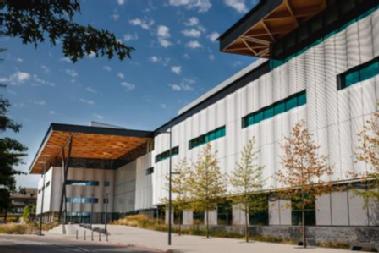 The Prof. Lord Bhattacharyya Building at the University of Warwick wins British Council for Office Midlands and Central Innovation Award.
The Prof. Lord Bhattacharyya Building at the University of Warwick wins British Council for Office Midlands and Central Innovation Award.
The National Automotive Innovation Centre, in the Prof. Lord Bhattacharyya Building, at the University of Warwick, has been recognised as one of the best workplaces in the Midlands and Central England at the annual British Council for Offices (BCO) regional awards. The BCO’s Festival Awards Week, recognises the highest quality developments in the UK and sets the standard for excellence in the regional and national office sector.
The Prof. Lord Bhattacharyya Building, University of Warwick received the region’s Innovation Award.
Named in honour of Britain’s first ever Professor of Manufacturing, the Prof. Lord Bhattacharyya Building houses the National Automotive Innovation Centre; a multimillion-pound centre, founded by WMG, Jaguar Land Rover and Tata Motors which is well timed, arriving when a global mobility revolution is underway, and aiming to be a stimulus to the rebirth of an optimistic new age of manufacturing in the Midlands to develop future vehicles and mobility solutions.
Fronted by a dramatic elevation, the 33,000m2 building has been sensitively designed for engineers, designers and academics to work together in, with a 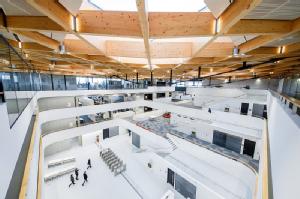 variety of spaces allowing for both privacy and collaboration. A timber roof spans the structure of the building, demonstrating the sustainable credentials of a facility that cannot but inspire.
variety of spaces allowing for both privacy and collaboration. A timber roof spans the structure of the building, demonstrating the sustainable credentials of a facility that cannot but inspire.
Executive Chair of WMG, Margot James comments: “This is excellent news for our partners and the region. The Midlands is the beating heart of automotive in the UK, and the National Automotive Innovation Centre will be the driving force behind future innovation in transport mobility.”
James Breckon, Director of Estates comments: “It is great to see this new building being recognised by other professionals and is testament to the wealth of architectural and engineering talent that was brought together to deliver this exemplary sustainable building. It brilliantly draws Industry and Academia together providing an inspirational environment to innovative within. As a landmark building it has transformed the campus at the University of Warwick and is a fitting legacy to the late Prof Lord Bhattacharyya.”
Rob van Zyl, building services partner at Cundall and chair of the Midlands & Central England judging panel commented: “This year’s entrants demonstrate that agile working has come of age, the Prof. Lord Bhattacharyya Building is no exception. What was initially a move towards cramming more people into less space through hot-desking has now evolved into something that is clearly more focused on the health and wellness of occupiers. It is also encouraging to see accelerating trends towards sustainability, efficiencies in energy consumption and the use of natural shapes, materials and plants. All across Britain, the office sector now possesses more knowledge on how to create a healthy and productive office than ever before and is making informed design decisions to an outstanding effect.”
Danny Parmar, chairman of the BCO Midlands & East Anglia committee added: “Many congratulations to the University of Warwick. This was one of several outstanding entries in this year’s BCO regional awards programme and reflects both the strength of our sector and the increasing demands placed upon it to deliver market-leading work environments.”
October the 19th marked the 12th year of the BCO Regional Awards dedicated to the Midlands and Central region. Held online, the ceremony was a virtual first for the BCO, but still involved all the usual excitement that makes up the in-person ceremony. Guests were able to network, celebrate with friends and watch a live ceremony, presented by the BBC’s former Chief Political Correspondent, John Sergeant to recreate the magic of the traditional awards ceremony.
Winners from the Midlands and Central England will compete with those from other regions at the BCO Virtual National Awards on Tuesday 26 January 2021.
ENDS
About the BCO
The British Council for Offices (BCO) is the UK’s leading member organisation representing the interests of all those who occupy, design, build, own or manage offices in the UK. This year marks 30 years of the BCO providing thought leadership and best practice in all issues related to the creation and use of office space – through its research, awards, conference and events programmes. You can learn more about the BCO at www.bco.org.uk
Forthcoming dates of note:
22 October: South of England &South Wales Awards
23 October: Scottish Awards
About the Regional Awards
The lead sponsor for this year’s BCO Awards is ISG. Category sponsors are AECOM, Glamox Luxonic, Waterman Group and Troup Bywaters + Anders. This year’s regional sponsors are Core Five and Overbury. The BCO awards are in association with EG.
About the National Automotive Innovation Centre (NAIC)
The NAIC the largest research centre of its kind in Europe and is a partnership between WMG at the University of Warwick, Jaguar Land Rover and Tata Motors European Technical Centre, with £150m investment and £30m funding from the UK governments co-funded UK Research Partnership Investment Fund through Research England, which includes the development of an Advanced Propulsion Research Laboratory.
FOR FURTHER INFORMATION PLEASE CONTACT:
Alice Scott
Media Relations Manager – Science
University of Warwick
Tel: +44 (0) 7920 531 221
E-mail: alice.j.scott@warwick.ac.uk
